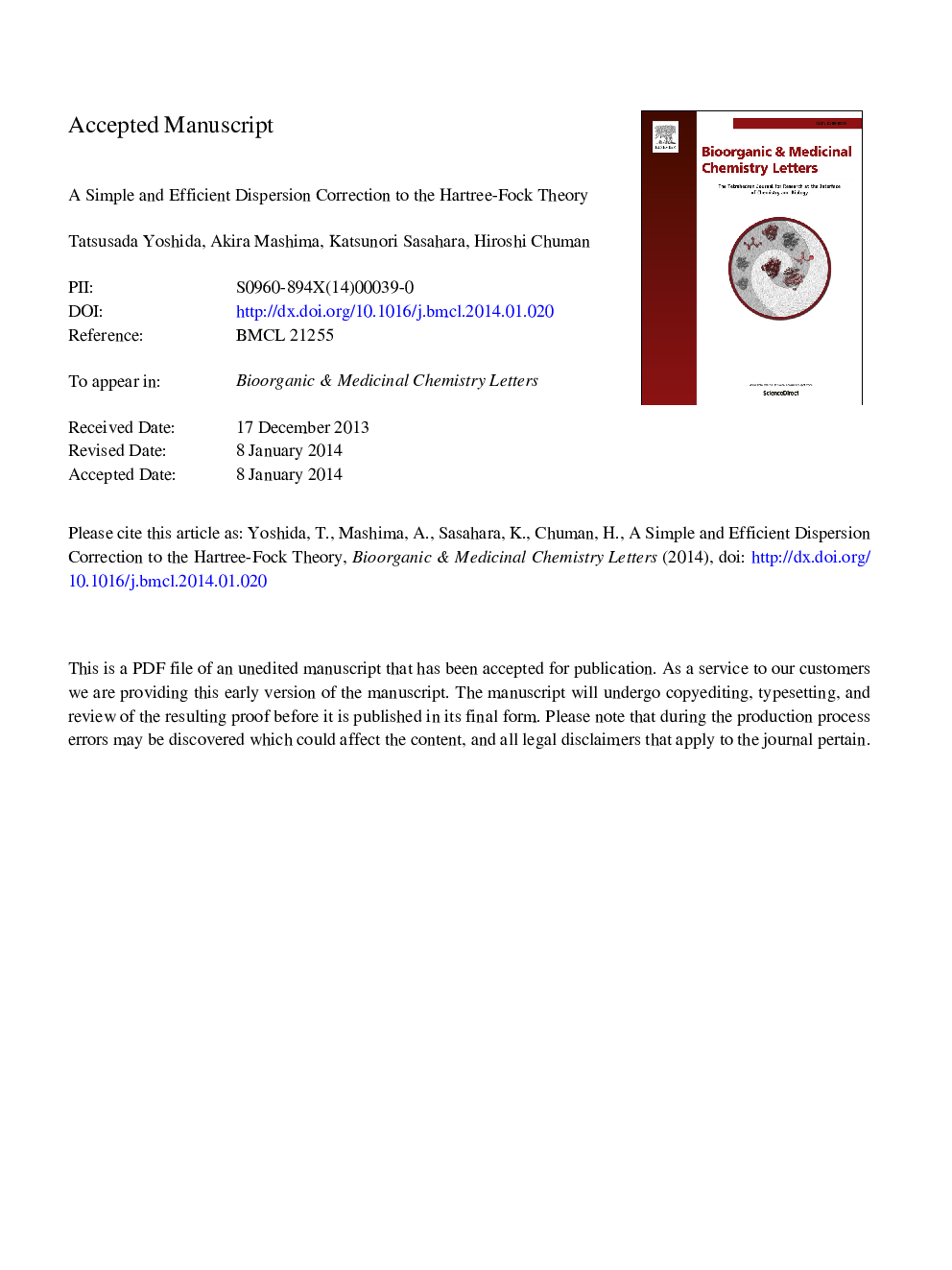| Article ID | Journal | Published Year | Pages | File Type |
|---|---|---|---|---|
| 10587067 | Bioorganic & Medicinal Chemistry Letters | 2014 | 15 Pages |
Abstract
One of the most challenging problems in computational chemistry and in drug discovery is the accurate prediction of the binding energy between a ligand and a protein receptor. It is well known that the binding energy calculated with the Hartree-Fock molecular orbital theory (HF) lacks the dispersion interaction energy that significantly affects the accuracy of the total binding energy of a large molecular system. We propose a simple and efficient dispersion energy correction to the HF theory (HF-Dtq). The performance of HF-Dtq was compared with those of several recently proposed dispersion corrected density functional theory methods (DFT-Ds) as to the binding energies of 68 small non-covalent complexes. The overall performance of HF-Dtq was found to be nearly equivalent to that of more sophisticated B3LYP-D3. HF-Dtq will thus be a useful and powerful method for accurately predicting the binding energy between a ligand and a protein, albeit it is a simple correction procedure based on HF.
Related Topics
Physical Sciences and Engineering
Chemistry
Organic Chemistry
Authors
Tatsusada Yoshida, Akira Mashima, Katsunori Sasahara, Hiroshi Chuman,
